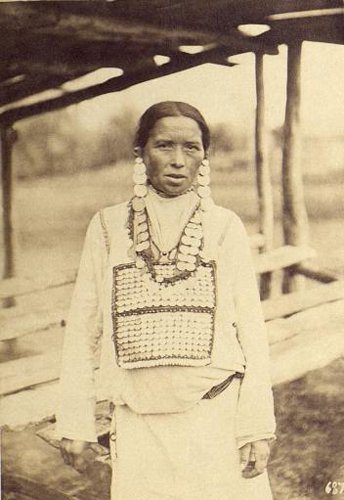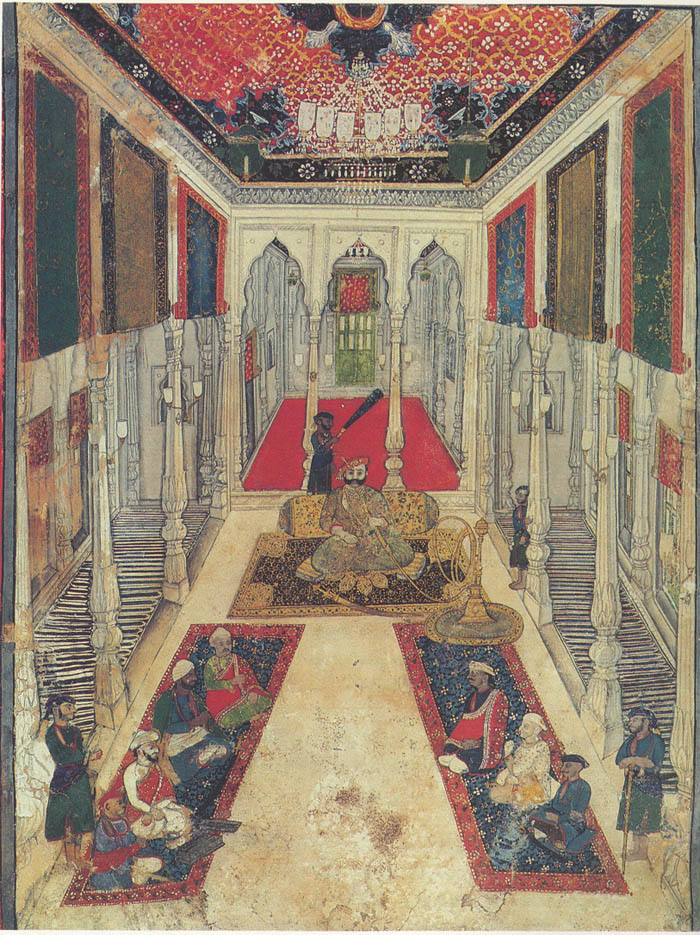|
Ilya Ulyanov
Ilya Nikolayevich Ulyanov (; – ) was a Russian public figure in the field of public education. He was the father of revolutionary Vladimir Lenin, who became a Bolshevik leader and founder of the Soviet Union, and Aleksandr Ulyanov, who was executed for his attempt to assassinate Tsar Alexander III in 1886. Life Ilya Nikolayevich Ulyanov was born in Astrakhan. His father was Nikolai Vasilyevich Ulyanov (or Ulyanin; 1765–1838), a port-city tailor and a former serf of possible Chuvash, Mordvinian, Russian or Kalmyk descent, who came from Sergachsky District, Nizhny Novgorod Governorate. He received his freedom from a landowner, Stepan Mikhailovich Brekhov. Ilya's mother, Anna Alexeyevna Smirnova (1793–1871), was half-Kalmyk, half-Russian and the daughter of city-dweller Alexei Lukyanovich Smirnov, a son of Lukyan Smirnov. Nikolai married 30-year-old Anna in 1823. Ilya had three sisters and a brother. Ulyanov graduated from Kazan University's Department of Physics and ... [...More Info...] [...Related Items...] OR: [Wikipedia] [Google] [Baidu] |
Astrakhan
Astrakhan (, ) is the largest city and administrative centre of Astrakhan Oblast in southern Russia. The city lies on two banks of the Volga, in the upper part of the Volga Delta, on eleven islands of the Caspian Depression, from the Caspian Sea, with a population of 475,629 residents at the 2021 Census. At an elevation of below sea level, it is the lowest city in Russia. Astrakhan was formerly the capital of the Astrakhan Khanate, Khanate of Astrakhan (a remnant of the Golden Horde) of the Astrakhan Tatars, and was located on the higher right bank of the Volga, from the present-day city. Situated on caravan and water routes, it developed from a village into a large trading centre, before being conquered by Timur in 1395 and captured by Ivan the Terrible in 1556 and in 1558 it was moved to its present site. The oldest economic and cultural center of the Volga region, Lower Volga region, it is often called the southernmost outpost of Russia, and the Caspian capital. The city ... [...More Info...] [...Related Items...] OR: [Wikipedia] [Google] [Baidu] |
Chuvash People
The Chuvash people (, ; , ) also called Chuvash Tatars, are a Turkic ethnic group, a branch of the Oğurs, inhabiting an area stretching from the Idel-Ural region to Siberia. Most of them live in the Russian republic of Chuvashia and the surrounding area, although Chuvash communities may be found throughout Russia as well as in Central Asia. They speak Chuvash, a Turkic language that diverged from other languages in the family more than a millennium ago. Among the Chuvash believers, the majority are Eastern Orthodox Christians although a minority follow Vattisen Yaly or Sunni Islam. Etymology There is no universally accepted etymology of the word ''Chuvash'', but there are two theories. One theory suggests that the word ''Chuvash'' may be derived from Common Turkic ''jăvaş'' ('friendly', 'peaceful'), as opposed to ''şarmăs'' ('warlike'). Another theory is that the word is derived from the '' Tabghach,'' an early medieval Xianbei clan and founders of the Northern ... [...More Info...] [...Related Items...] OR: [Wikipedia] [Google] [Baidu] |
Gymnasium (school)
''Gymnasium'' (and Gymnasium (school)#By country, variations of the word) is a term in various European languages for a secondary school that prepares students for higher education at a university. It is comparable to the US English term ''University-preparatory school, preparatory high school'' or the British term ''grammar school''. Before the 20th century, the gymnasium system was a widespread feature of educational systems throughout many European countries. The word (), from Greek () 'naked' or 'nude', was first used in Ancient Greece, in the sense of a place for both physical and intellectual education of young men. The latter meaning of a place of intellectual education persisted in many European languages (including Albanian language, Albanian, Bulgarian language, Bulgarian, Czech language, Czech, Dutch language, Dutch, Estonian language, Estonian, Greek language, Greek, German language, German, Hungarian language, Hungarian, Macedonian language, Macedonian, Montene ... [...More Info...] [...Related Items...] OR: [Wikipedia] [Google] [Baidu] |
Dvoryane
The Russian nobility or ''dvoryanstvo'' () arose in the Middle Ages. In 1914, it consisted of approximately 1,900,000 members, out of a total population of 138,200,000. Up until the February Revolution of 1917, the Russian noble estates staffed most of the Russian government and possessed a self-governing body, the Assembly of the Nobility. The Russian word for nobility, ''dvoryanstvo'' derives from Slavonic ''dvor'' (двор), meaning the court of a prince or duke (''knyaz''), and later, of the tsar or emperor. Here, ''dvor'' originally referred to servants at the estate of an aristocrat. In the late 16th and early 17th centuries, the system of hierarchy was a system of seniority known as ''mestnichestvo''. The word ''dvoryane'' described the highest rank of gentry, who performed duties at the royal court, lived in it (''Moskovskie zhiltsy'', "Moscow dwellers"), or were candidates to it, as for many boyar scions (''dvorovye deti boyarskie'', ''vybornye deti boyarskie''). A ... [...More Info...] [...Related Items...] OR: [Wikipedia] [Google] [Baidu] |
Penza
Penza (, ) is the largest types of inhabited localities in Russia, city and administrative center of Penza Oblast, Russia. It is located on the Sura (river), Sura River, southeast of Moscow. As of the 2010 Russian census, 2010 Census, Penza had a population of 517,311, making it the List of cities and towns in Russia by population, 36th-largest city in Russia. Etymology The city name is a hydronym and means in () from ''pen'' 'end of (genitive)' and ''sa(ra)'' 'swampy river'. Geography Urban layout This central quarter occupies the territory on which the wooden fortress Penza was once located, therefore it is sometimes called the Serf. The architectural concept of the old fortress, erected on the eastern slope of the mountain above the river, predetermined the direction of the first streets. The direction and location of the first streets were set by the passage towers of the fortress and the orientation of its walls. This is how the first six streets of the city were formed ... [...More Info...] [...Related Items...] OR: [Wikipedia] [Google] [Baidu] |
Mathematics
Mathematics is a field of study that discovers and organizes methods, Mathematical theory, theories and theorems that are developed and Mathematical proof, proved for the needs of empirical sciences and mathematics itself. There are many areas of mathematics, which include number theory (the study of numbers), algebra (the study of formulas and related structures), geometry (the study of shapes and spaces that contain them), Mathematical analysis, analysis (the study of continuous changes), and set theory (presently used as a foundation for all mathematics). Mathematics involves the description and manipulation of mathematical object, abstract objects that consist of either abstraction (mathematics), abstractions from nature orin modern mathematicspurely abstract entities that are stipulated to have certain properties, called axioms. Mathematics uses pure reason to proof (mathematics), prove properties of objects, a ''proof'' consisting of a succession of applications of in ... [...More Info...] [...Related Items...] OR: [Wikipedia] [Google] [Baidu] |
Physics
Physics is the scientific study of matter, its Elementary particle, fundamental constituents, its motion and behavior through space and time, and the related entities of energy and force. "Physical science is that department of knowledge which relates to the order of nature, or, in other words, to the regular succession of events." It is one of the most fundamental scientific disciplines. "Physics is one of the most fundamental of the sciences. Scientists of all disciplines use the ideas of physics, including chemists who study the structure of molecules, paleontologists who try to reconstruct how dinosaurs walked, and climatologists who study how human activities affect the atmosphere and oceans. Physics is also the foundation of all engineering and technology. No engineer could design a flat-screen TV, an interplanetary spacecraft, or even a better mousetrap without first understanding the basic laws of physics. (...) You will come to see physics as a towering achievement of ... [...More Info...] [...Related Items...] OR: [Wikipedia] [Google] [Baidu] |
Kazan University
Kazan Federal University (; ) is a public research university located in Kazan, Russia. The university was founded in 1804 as Imperial Kazan University, which makes it the second oldest continuously existing tertiary education institution in Russia. Founder of non-Euclidean geometry Nikolai Ivanovich Lobachevsky served there as the rector from 1827 until 1846. In 1925, the university was renamed in honour of its student Vladimir Ilyich Ulyanov (Lenin). The university is known as the birthplace of organic chemistry due to works by Aleksandr Butlerov, Vladimir Markovnikov, Aleksandr Arbuzov, and the birthplace of electron spin resonance discovered by Evgeny Zavoisky. In 2011, Kazan University received a federal status. It is also one of 18 Russian universities that were initially selected to participate in the Project 5-100, coordinated by the Government of the Russian Federation and aimed to improve their international competitiveness among the world's leading research and e ... [...More Info...] [...Related Items...] OR: [Wikipedia] [Google] [Baidu] |
Landed Nobility
Landed nobility or landed aristocracy is a category of nobility in the history of various countries, for which landownership was part of their noble privileges. The landed nobility show noblesse oblige, they have duty to fulfill their social responsibility. Their character depends on the country. *The notion of landed gentry in the United Kingdom and Ireland varied over time. *In Russian Empire landed nobles were called '' pomeshchiks'', with the term literally translated as " estate owner". * Junkers were the landed nobility of Prussia and eastern Germany. *Landadel were the landed nobility of the Holy Roman Empire. *In Poland, ''szlachta'' were usually landowners, with magnates being the class of the wealthiest ''szlachta''. Middle and smaller landed szlachta was called '' ziemiaństwo/ziemianie'' (from the word ''ziemia'', land), usually translated as landed gentry. *In some places, e.g., in Low Countries before Spanish rule, urban nobility with landed estates was distin ... [...More Info...] [...Related Items...] OR: [Wikipedia] [Google] [Baidu] |
Nizhny Novgorod Governorate
Nizhny Novgorod Governorate was an administrative-territorial unit (''guberniya'') of the Russian Empire, Russian Republic, and the Russian Soviet Federative Socialist Republic, Russian SFSR, roughly corresponding to the Volga region, Upper and Middle Volga region and what is now most of the Nizhny Novgorod Oblast. In the early 20th Century, Nizhny Novgorod Governorate bordered Kostroma Governorate, Kostroma and Vyatka Governorate, Vyatka governorates to the north, Vladimir Governorate to the west, Kazan Governorate, Kazan and Simbirsk Governorate, Simbirsk governorates to the east, and Penza Governorate, Penza with Tambov Governorate, Tambov governorates to the south. In the early 18th Century, Nizhny Novgorod Governorate was included in Kazan Governorate, from 1708–1714, and 1717–1719. The Reform of Peter the Great formed the newly governorate from 1714 to 1779. in the Reign of Catherine the Great, the governorate was reorganized to the Viceroyalty until 1796. In 1929 the g ... [...More Info...] [...Related Items...] OR: [Wikipedia] [Google] [Baidu] |
Sergachsky District
Sergachsky District () is an administrative district (raion), one of the forty in Nizhny Novgorod Oblast, Russia.Order #3-od Municipally, it is incorporated as Sergachsky Municipal District.Resolution #670 It is located in the southeast of the oblast. The area of the district is . Its administrative center is the town A town is a type of a human settlement, generally larger than a village but smaller than a city. The criteria for distinguishing a town vary globally, often depending on factors such as population size, economic character, administrative stat ... of Sergach. Population: 31,296 ( 2010 Census); The population of Sergach accounts for 68.3% of the district's total population. History The district was established in 1929. References Notes Sources * * {{Use mdy dates, date=August 2012 Districts of Nizhny Novgorod Oblast States and territories established in 1929 __NOTOC__ ... [...More Info...] [...Related Items...] OR: [Wikipedia] [Google] [Baidu] |







